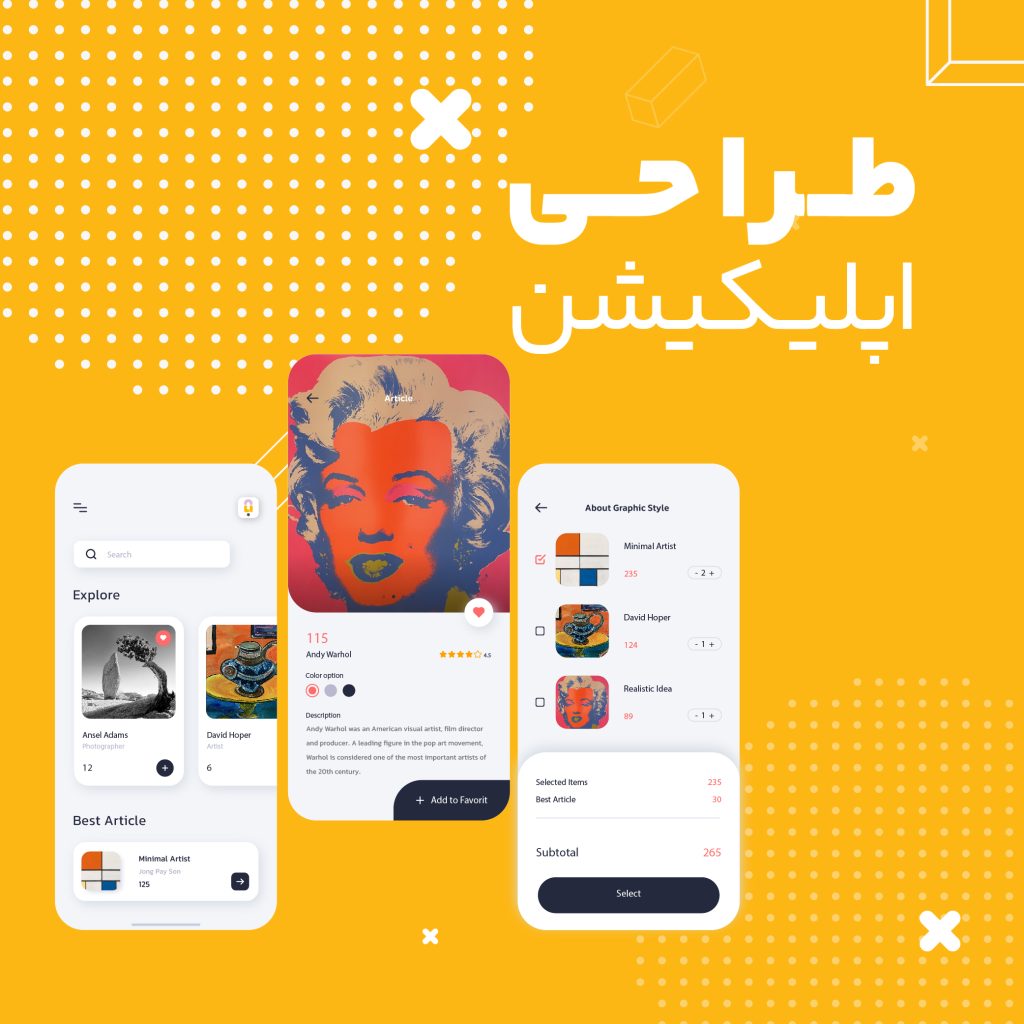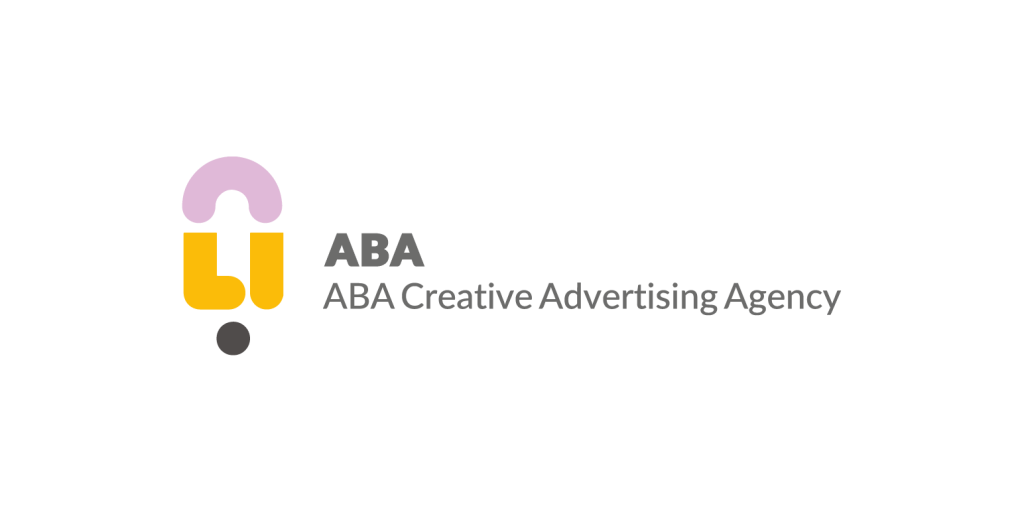- Home
- Services
- Sloutions
You can contact us to get the best solution
- Clients
- Campaigns
- our customers
- Abamag
You can contact us to get the best solution
- Our Cataloge
- about us
- Contact us
App Design
App design involves creating an appealing and suitable interface for a mobile application. This process includes designing screens, icons, graphics, and other elements used in the app.
The importance of app design is due to the following reasons:
- Improved User Experience: Proper app design allows users to interact with it easily and enjoy a better user experience. This includes designing simple and understandable screens, accessible charts and reports, and attractive icons and graphic elements.

- Increased Usage Rate: With proper design, users can easily access the information they need and take full advantage of the app’s features. This leads to an increase in app usage rates and greater user engagement.
- Marketing and Promotion: An attractive and professional app design can serve as an effective marketing tool. When an app has a unique and appealing design, it attracts more users and increases the likelihood of downloads and usage.
- Competitiveness: In today’s competitive world, a professional and suitable app design can make a significant difference. With numerous apps in the market, an attractive and user-friendly design can draw users’ attention and distinguish itself from competitors.
In summary, app design is of great importance as it allows users to easily use the app, increases usage rates, serves as an effective marketing tool, and enhances the app’s competitiveness.
Mobile app design is a vital aspect of the digital age, playing an important role in shaping user experiences, boosting engagement, and improving app retention rates. With the rapid expansion of smartphones and apps, proper design can significantly impact a business’s success. This article covers every essential aspect of mobile app design, from user interface (UI) to user experience (UX), key design principles, tools, and best practices.
What is Mobile App Design?
Mobile app design refers to the process of creating engaging and user-friendly applications for mobile devices such as smartphones and tablets. It encompasses everything from the app interface layout (UI) to how users interact with it (UX). Design plays a pivotal role in ensuring a seamless and intuitive user experience, ultimately leading to increased satisfaction, better engagement, and more downloads.
Importance of Mobile App Design
First impressions matter: A well-designed app leaves a lasting impact on users. A user’s first interaction with an app is often the most critical—if they find it easy to use and visually appealing, they are more likely to stick with it.
Enhancing user retention: A well-designed app ensures users return to it regularly. Poor navigation or confusing design choices can lead to high abandonment rates.
Competitive advantage: The mobile app market is saturated with millions of options. A sleek and unique design sets your app apart from competitors and strengthens brand identity.
Improved usability: Design is not just about aesthetics; it’s about how functional and efficient the app is. Proper design enhances usability, directly impacting app success.
Key Elements of Mobile App Design
User Interface (UI) Design: UI design focuses on the look and feel of an app. It includes everything users visually interact with, such as buttons, icons, fonts, and layout. The goal of UI design is for the app to be visually appealing and easy to navigate.
Consistency: Using consistent colors, fonts, and button styles throughout the app helps users become familiar with how to use it.
Visual hierarchy: Effective use of size, color, and spacing to emphasize important elements like calls-to-action (CTA).
Responsive design: The app should function seamlessly across different devices and screen sizes.
Intuitive navigation: Menus, buttons, and icons should be clearly labeled and placed in intuitive locations, allowing users to navigate the app without confusion.
User Experience (UX) Design: UX design focuses on the user’s feeling when interacting with the app. The goal of UX is to provide meaningful and relevant experiences, including aspects like ease of navigation, speed, and overall app performance.
User-centered approach: Design the app with the end-user in mind. Conducting user research and creating personas can help understand users’ behavior and preferences.
Simple onboarding process: New users should quickly understand how to use the app. Overloading users with information can be overwhelming.
Loading time and performance: While beautiful design may be appealing, if the app is slow, users will abandon it. Optimizing images and using efficient coding practices can enhance the experience.
Accessibility: Ensure the app is accessible to all users, including those with disabilities. Features such as screen readers, voice commands, and adjustable font sizes are essential.
Best Practices for Mobile App Design
- Follow platform-specific guidelines: Each mobile platform (iOS, Android) has its own design language and guidelines. Following these helps ensure consistency across platforms and a more seamless user experience.
- Use grid-based layout: The grid system structures and organizes content neatly, improving readability and usability.
- Minimal design: Simplicity is key in mobile app design. A cluttered interface can confuse users. Use white space and include only essential features.
- Optimize for touch interactions: Mobile devices rely on touch interactions. Buttons should be large enough and placed in accessible locations.
- Include micro-interactions: Micro-interactions are subtle animations or design features that respond to user actions, making the user experience more engaging.
- Strategic use of color: Colors evoke emotions and guide user behavior. The design should align with the brand’s purpose and identity.
Mobile App Design Tools
– Sketch: A popular tool for UI/UX designers, helping with wire framing and prototyping.
– Figma: A web-based tool that allows real-time collaboration.
– Adobe XD: A powerful tool for UI/UX design, enabling designers to create interactive prototypes.
– In Vision: A tool for creating interactive prototypes and gathering feedback.
Mobile App Design Process
- Research and Discovery: Before entering the design phase, market research and understanding the target audience are crucial.
- Wireframing: Wireframes act as a roadmap for the app, outlining its structure and layout without the distraction of colors or fonts.
- Prototyping: A prototype is a working model of the app that demonstrates its flow and functionality.
- Visual Design: In this stage, actual visual elements, including colors and images, are applied.
- Testing: Usability testing is a critical phase where user feedback is collected.
- Iteration and Refinement: Refine the design based on test feedback.
Future Trends in Mobile App Design
– Dark Mode: Dark mode significantly improves usability and energy efficiency.
– **Voice User Interface (VUI): Designing apps with voice interaction capabilities is a growing trend.
– Augmented Reality (AR): AR is transforming mobile app design, especially in e-commerce sectors.
– AI-based Personalization: Apps using AI for personalized content are becoming increasingly popular.
Conclusion
Mobile app design is more than aesthetics—it’s about creating an experience that captivates users and brings them back to the app. By following best design practices, incorporating new trends, and using the right tools, you can create an app that stands out in today’s crowded market.

Ways of communication
- Tehran Province, Tehran, Fathi Shaqaqi St, No. 118, Iran
- +9892188023723
- +980121408098
- info@abamedia.com
تمام حقوق مادی و معنوی این وب سایت متعلق به موسسه فرهنگی دیجیتال آرزوهای بزرگ امروز میباشد.

